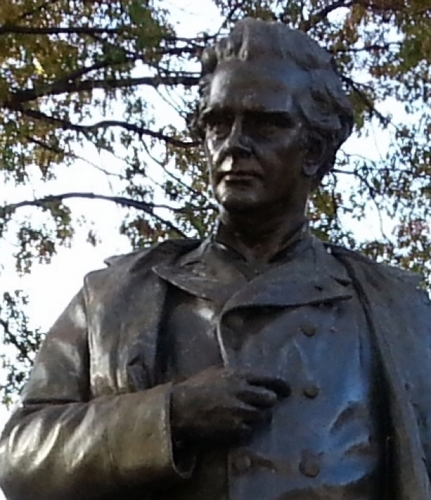SAXTONS RIVER — Keep your hands off my uterus!
That's an often-repeated placard and plea at women's marches I've attended over the past 40 years. In the U.S. and abroad, it's a common, continuing refrain because government sanctioning of abuse of women's bodies has been occurring since well before the second-wave women's movement exposed it in the 1970s.
In those days, I worked in the women's health movement alongside Our Bodies, Ourselves and other national organizations. One of the myriad issues we dealt with was the sterilization of poor, Black, and Brown women.
We helped raise awareness of the medical abuse of Puerto Rican women that resulted in a third of women of reproductive age being sterilized for decades at clinics often funded by the U.S. Government.
In the 1960s, women in Puerto Rico were also the subjects of birth-control pill trials, without their consent. Those who became pregnant on placebos were offered no help, financial or otherwise, and were forced to carry resulting pregnancies to term.
Another frequent abuse women of color faced was the lack of real informed consent. It can hardly be considered consent when you are asked to sign a paper in English and your only language is Spanish, or if you are asked by the nice doctor if you'd like to stop having babies after you've just endured a long, arduous labor.
* * *
There is a long, ugly history of abusing and using women's bodies by way of coercion and for experimentation.
Dr. J. Marion Sims, known as the “father of modern gynecology,” practiced medicine in Alabama from 1835 to 1849. During that time, he conducted hideous experiments, without any anesthesia, on enslaved women he had purchased in the 1840s.
At an annual convention of the American Public Health Association in the late 1970s, his portrait was still on display - until enraged women demanded that it be taken down and never shown again.
Affluent white women were often subjected to having their ovaries removed in the second half of the 19th century if they were deemed to be overly sexual. This practice coincided with the belief that if women used their minds too eagerly, their uteruses would atrophy, denying them the God-given role of child bearers.
Medical abuse was further embraced in the early 20th century when eugenics was popular, with the growth of programs that coerced women to be sterilized if they did not willingly consent.
As Alexandra Minna Stern, author of Eugenic Nation, points out, sterilization was viewed as part of a “necessary public health intervention aimed at protecting society from deleterious genes.” This mindset prevailed late into the century. My friend's daughter, who was mentally impaired, was subjected to sterilization in the 1970s as part of her care plan.
Some states, like California, passed laws that resulted in thousands of residents being sterilized for decades (including some men). Even as late as 2010, the California Department of Corrections and Rehabilitation had sterilized 150 women in four years. Richard Nixon, a Californian, significantly increased Medicaid funding for sterilization of poor Americans with an emphasis on people of color.
Let us remember, medical historians remind us, that eugenics policies in the U.S. aimed at those considered too mentally defective to reproduce, are credited with becoming models for Nazi Germany.
One of the saddest stories of a Black woman being sterilized during her childbearing years is that of civil rights activist Fannie Lou Hamer.
She had a hysterectomy without her consent in 1961 while undergoing minor surgery for removal of a benign tumor. She spoke about her experience as a Black woman who had been subjected to what was known as a “Mississippi appendectomy,” when women were taken to local clinics and sterilized.
* * *
Now comes Dawn Wooten, a courageous nurse.
She revealed that women in an ICE detention center in Georgia, which is run by a private prison company, found that an outside doctor performed hysterectomies on them when they complained about non-threatening reproductive health issues.
Many of the women who experienced major surgery awoke to find that their reproductive organs were all or partially removed without their prior knowledge or consent. Most were still of childbearing age, and most had no idea why they had undergone the procedure.
Pauline Binam, 30, was one of them. She was being quickly deported by ICE to Cameroon, which she left at age 2. Binam, now 30, was on the tarmac when members of Congress, including Rep. Sheila Jackson Lee, intervened to keep her in the U.S.
According to her lawyer, Binam thought she was getting a routine procedure last year, but when she woke up from surgery, the doctor informed her that he had to remove one of her fallopian tubes.
Imagine how hard it will be to find records of the 17 surgeries that have now been reported. Think about how many abused women will be rushed onto airplanes and deported so they can't bear witness. Then try to understand what it feels like to have undergone surgery that renders you unable to have a child because you are young, poor, and unwanted.
It boggles the mind, and makes you want to weep.
